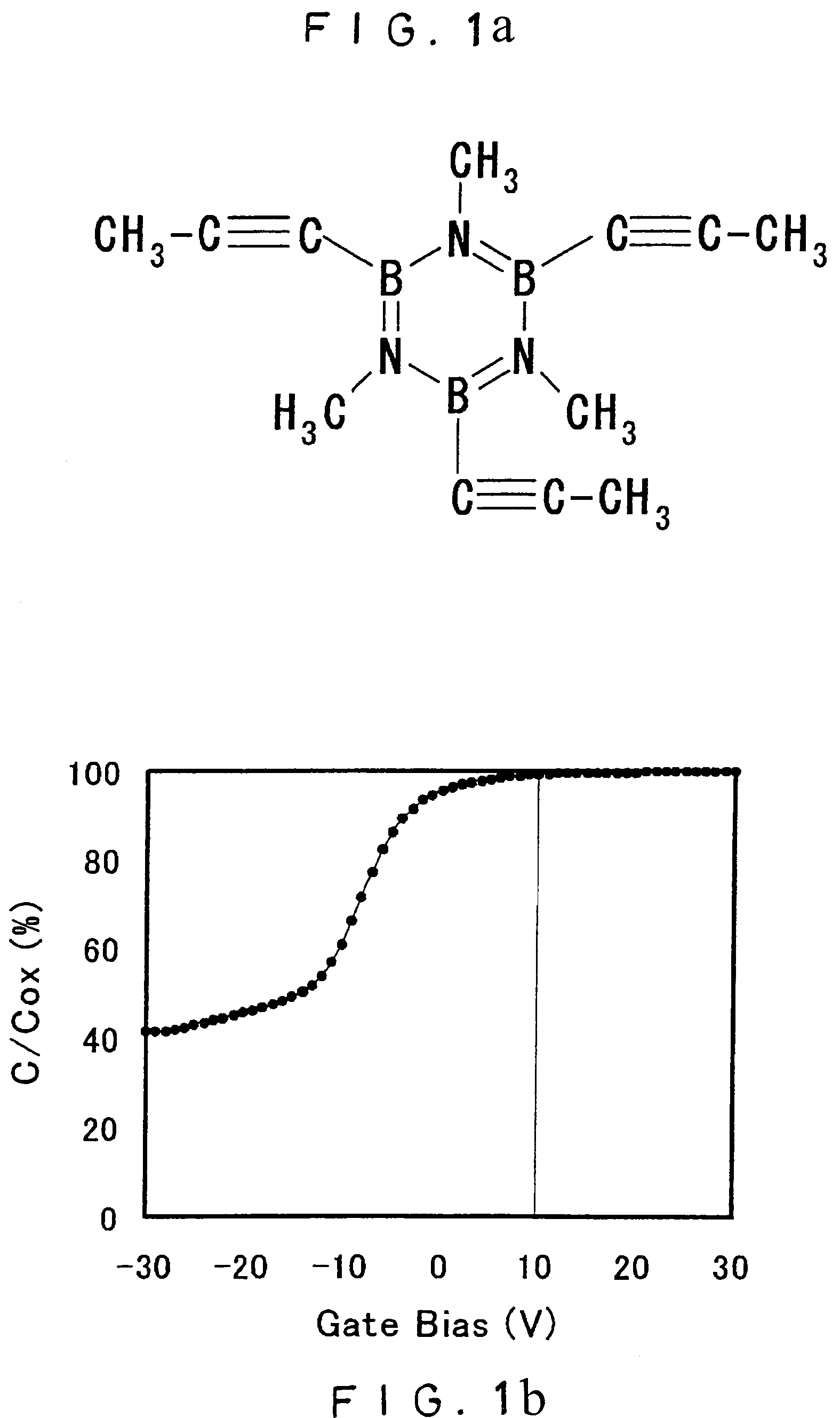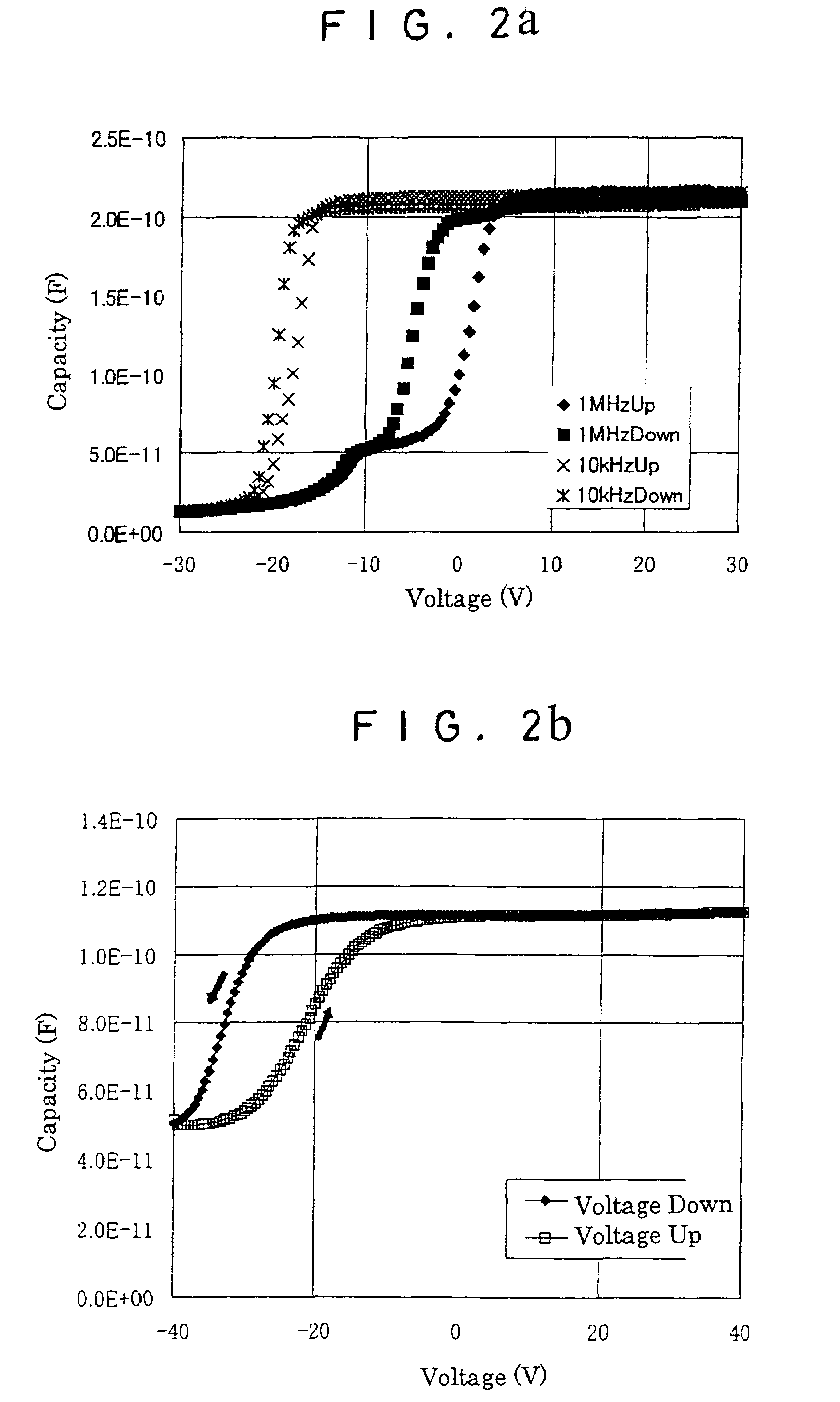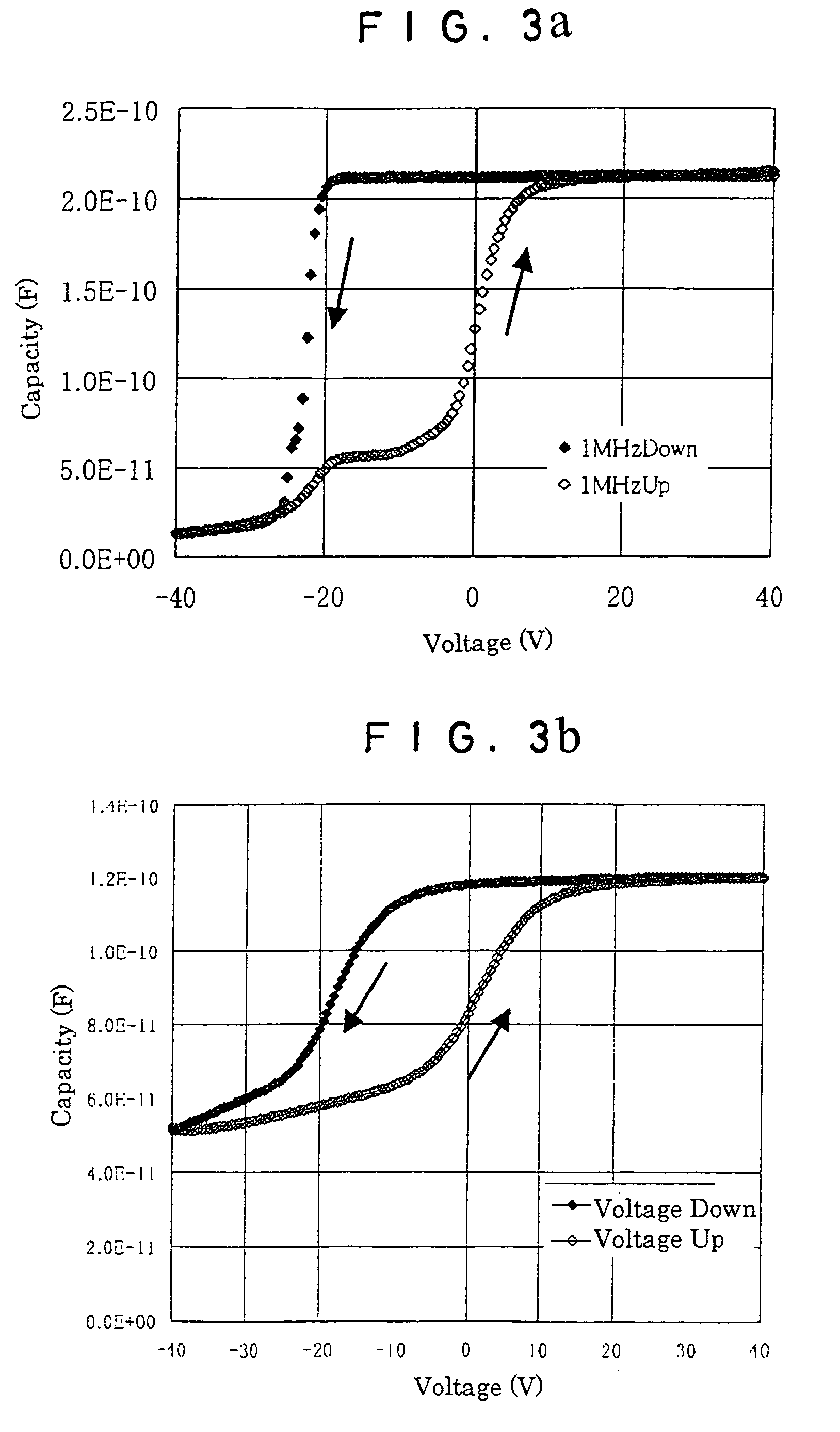Low dielectric constant insulating material and semiconductor device using the material
a technology of low dielectric constant and insulating material, which is applied in the direction of basic electric elements, transportation and packaging, layered products, etc., can solve the problems of reducing the processing speed of ulsi, adding to the distance of wiring, and conspicuously low mechanical strength of porous siosub>2/sub>, so as to prevent the reduction of throughput speed and increase parasitic capacity
- Summary
- Abstract
- Description
- Claims
- Application Information
AI Technical Summary
Benefits of technology
Problems solved by technology
Method used
Image
Examples
embodiment 1
[0074]An embodiment embracing the first characteristic of this invention will be shown below. This embodiment represents a case in which a polymer similar to ethynylborazine was obtained by subjecting B,B′,B″-tripropynyl-N,N′,N″-trimethyl borazine (FIG. 1(a)) having a propynyl group linked to the boron atom of borazine to hydrosilylating polymerization with 1,3,5,7-tetramethyl cyclo-tetrasiloxane in a solvent of ethyl benzene in the presence of a platinum catalyst. The polymer solution thus obtained had a long life and could be uniformly applied to a surface with a spin coater. The thin film of polymer obtained by transforming the polymer solution to a network structure by a heat treatment was found to possess a low relative dielectric constant.
[0075]In a solvent of ethyl benzene under a nitrogen atmosphere, 1 mol of B,B′,B″-tripropynyl-N,N′,N″-trimethyl borazine having a propynyl group formed of a triple bond linked to the boron atom of borazine as a borazine derivative and 1.1 mol...
embodiment 2
[0113]Now, Embodiment 2 that synthesized a borazine-silicone polymer by fulfilling the second characteristic of this invention will be shown below.
[0114]The borazine-siloxane polymer that is one form of the borazine-silicon polymer possesses a substituent group containing a triple bond in the boron atom of a borazine ring as shown in FIG. 4(c). It is obtained by subjecting a borazine compound possessing an alkyl substituent group in the nitrogen atom and 1,3,5,7-tetramethyl cyclosiloxane to hydrosilylating polymerizsation.
[0115]The polymerization reaction was performed in two stages. By performing the polymerization of the first stage at room temperature or 40° C., a polymer solution formed of a linear polymer uniformly soluble in a solvent was obtained. This polymer solution was applied on a Si wafer by the use of a spin coater. At the second stage, the coated wafer was heated from 200° C. through 400° C. to obtain a thin film formed of a network polymer.
[0116]The borazine-siloxane...
embodiment 3
[0152]FIG. 13 is a cross section of a semiconductor device representing Embodiment 3 of this invention. This embodiment embraces the third characteristic of this invention.
[0153]A silicon (Si) substrate 101 was separated into elements and fabricated in accordance with a prescribed circuit design to form an active device, such as a transistor. The active device, after having a BPSG / CVD-SiO2 (102) deposited thereon, connecting holes 103 opened therein for electrical connection, and a local wiring formed therein with tungsten (W), for example, and the connecting holes filled with tungsten, was treated by the chemical mechanical polishing (CMP) to have the surface thereof flattened. Denoted by 103 in the diagram are the connecting holes that were buried with W (FIG. 13(a)).
[0154]FIG. 13(a) avoids depicting details, such as the transistor, for the sake of simplicity. The following explanation will be made with reference to the part A of FIG. 13(a), which is a magnified diagram. This inve...
PUM
| Property | Measurement | Unit |
|---|---|---|
| temperature | aaaaa | aaaaa |
| relative dielectric constant | aaaaa | aaaaa |
| dielectric constant | aaaaa | aaaaa |
Abstract
Description
Claims
Application Information
 Login to View More
Login to View More - R&D
- Intellectual Property
- Life Sciences
- Materials
- Tech Scout
- Unparalleled Data Quality
- Higher Quality Content
- 60% Fewer Hallucinations
Browse by: Latest US Patents, China's latest patents, Technical Efficacy Thesaurus, Application Domain, Technology Topic, Popular Technical Reports.
© 2025 PatSnap. All rights reserved.Legal|Privacy policy|Modern Slavery Act Transparency Statement|Sitemap|About US| Contact US: help@patsnap.com



